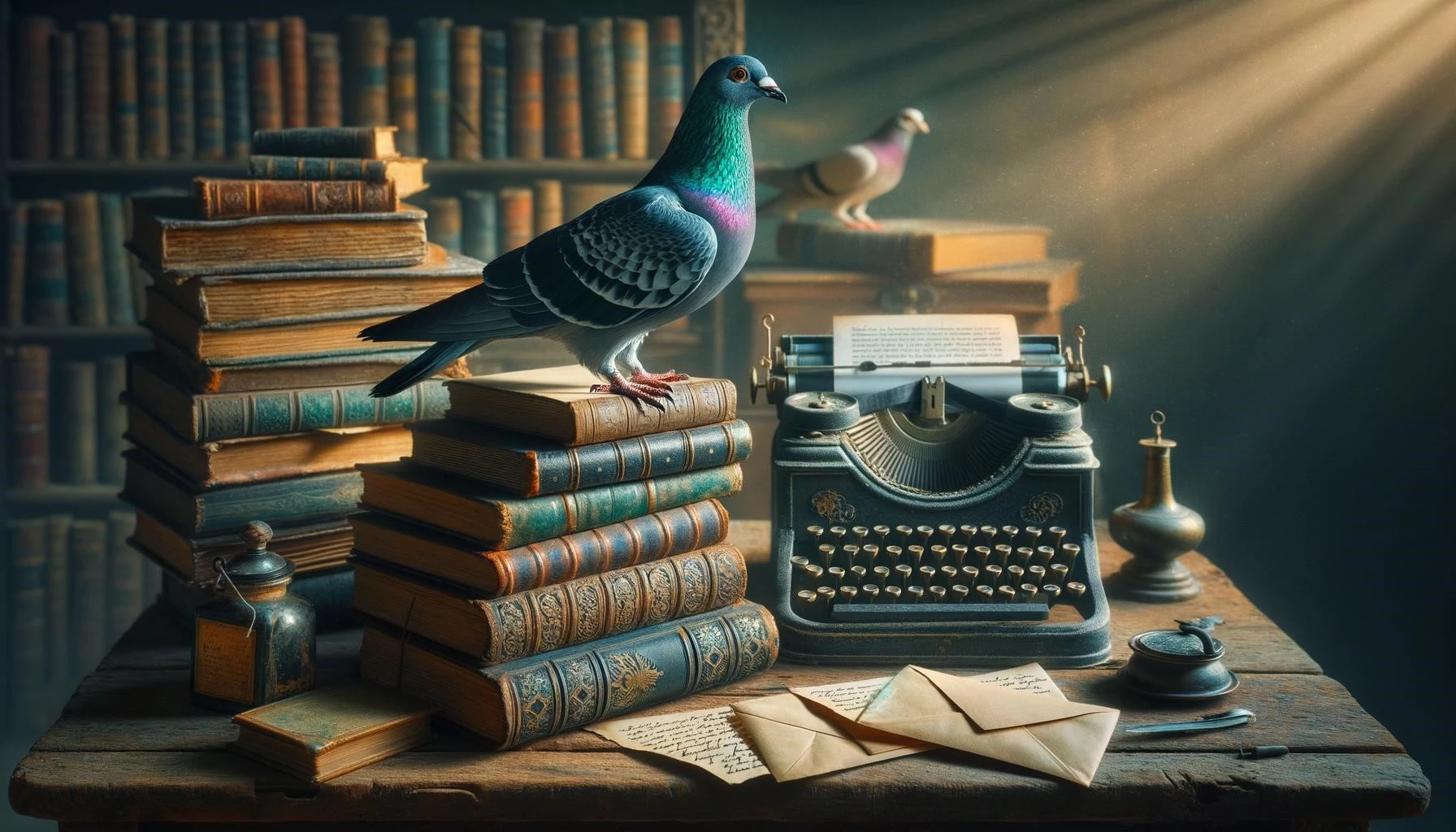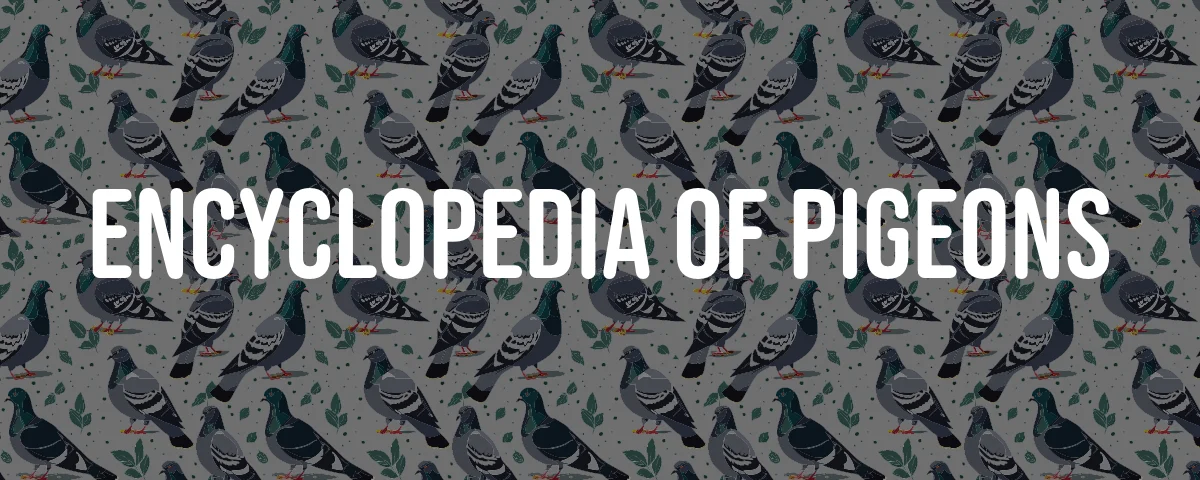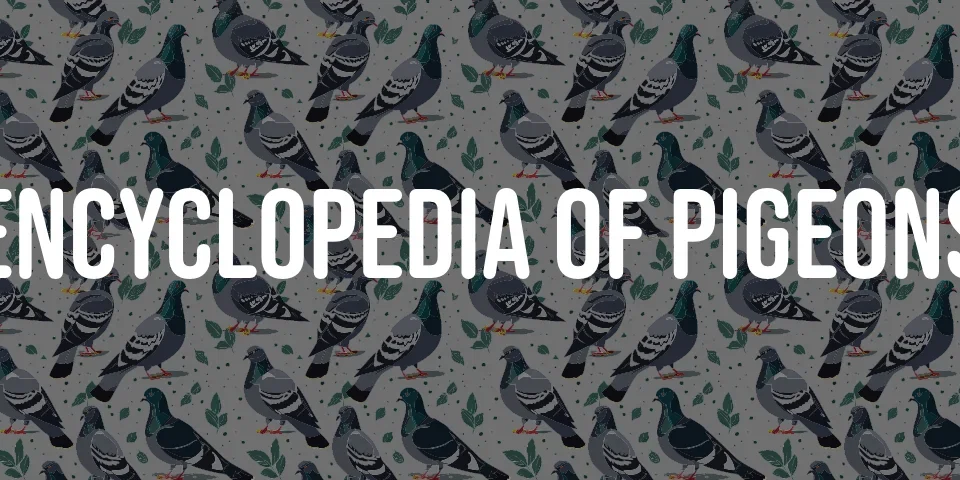The Ice Pigeon, known in Polish as Lazurek and in German as Eistaube, is a breed of fancy pigeon that has been developed through many years of selective breeding. This breed is a domesticated variety that descends from the rock pigeon (Columba livia). It is particularly noted for its unique “ice-blue” coloration, which gives the breed its name. The Ice Pigeon is one of the oldest German color pigeon breeds, with its development traced back to regions in eastern Germany and western Poland, particularly in Saxony and Silesia.
Origin and History
The Ice Pigeon’s history is deeply rooted in South Germany, where it was first developed. The breed’s origins can be traced to the crossbreeding of different pigeon lineages in the 19th century. Notably, Charles Darwin is known to have crossbred the Ice pigeon in 1846, which was part of his research into color patterns and inheritance, just a few years before his publication of “On the Origin of Species.”
Physical Characteristics
Appearance
The Ice Pigeon is an average-sized bird with a striking appearance. Its most notable feature is its pale grey, or “ice-blue,” coloration. The breed has several varieties, which differ in the type and color of their wing pattern. However, the basic color of these birds is a consistent pale grey. The Ice Pigeon’s plumage appears even lighter due to the presence of abundant powder down, which covers the feathers in a whitish dust. This breed may have feathered or unfeathered feet, with both smooth-footed and muffed (feathered) varieties.
Color Varieties
The Ice Pigeon comes in different color varieties, including:
- Hollow: No drawing on the wing blade.
- Black-binding: Wings have two parallel narrow black bands.
- Hammered: Wing plates have triangular and black hammering that alternates with triangles of the base color.
- Porcelain-colored: Wings have a scale color that shows a delicate pink tone.
Eye Color
The eye color of Ice Pigeons varies depending on the variety. The black barred and checked versions have orange to yellow-orange colored eyes, while all other varieties have black eyes.
Body Structure
The Ice Pigeon has a slightly oblong head with a smooth contour. It possesses a medium to long and slender beak that is dark in color. The neck is medium-long and gently forward-stretched. The chest is broad and deep, and the back is broad between the shoulders, narrowing towards the tail. The wings are long, resting on the tail without crossing, and the tail is long and well-closed. Legs are tight-fitting and feather-rich but not excessively long on the muffed variety.
Behavior and Temperament
Ice Pigeons are known for their calm and gentle temperament, making them ideal pets for bird enthusiasts. They exhibit distinctive behavior, such as puffing out their crop during courtship displays. These pigeons are social birds that enjoy the company of other pigeons and can form close bonds with their owners.
Breeding and Care
Housing
Good housing is crucial for Ice Pigeons. They require enough space to move around freely and engage in natural behaviors, such as flying and perching. A large aviary or loft is ideal for their housing.
Exercise
Regular exercise is essential for maintaining the physical health and mental well-being of Ice Pigeons. Opportunities for flight and movement should be provided.
Health Care
Regular check-ups with an avian veterinarian are important, along with grooming practices like trimming nails and beaks. Close monitoring of health and seeking veterinary care at signs of illness or injury is necessary.
Breeding
Ice Pigeons can be bred like other pigeon breeds. Nesting material and conditions should be suitable for the comfort of the baby birds. The breed is known for its good breeding capabilities and raising its young well.
Special Notes
While Ice Pigeons are beautiful and have a gentle nature, they may not be suitable for people with allergies due to the feather dust responsible for their unique coloration.
Key Data Table
| Feature | Description |
|---|---|
| Conservation Status | Common |
| Country of Origin | Germany |
| US Breed Group | Fancy |
| Size | Average |
| Color Varieties | Hollow, Black-binding, Hammered, Porcelain-colored |
| Eye Color | Orange to yellow-orange (varies), Black (most varieties) |
| Beak | Medium to long, slender, dark |
| Legs | Tight fitting, feather-rich (muffed variety) |
| Flying Ability | Average |
| Climate Tolerance | All climates |
| Use | Exhibition, ornamental, pets |
Interesting Facts
- Charles Darwin’s work with Ice Pigeons contributed to his understanding of inheritance and color patterns, which was a precursor to his evolutionary theories.
- The Ice Pigeon’s unique coloration and powder down are so distinctive that they have influenced the breed’s names in different languages, such as “Lazurek” in Polish, meaning “glazed pigeon,” and “Eistaube” in German, referring to the icy appearance of the plumage.
- Despite their ornamental appearance, Ice Pigeons are also known for their racing ability, being fast and agile flyers.
The Ice Pigeon is a breed that combines beauty, history, and functionality, making it a fascinating subject for pigeon enthusiasts and a delightful pet for those who appreciate its gentle nature and striking appearance.






